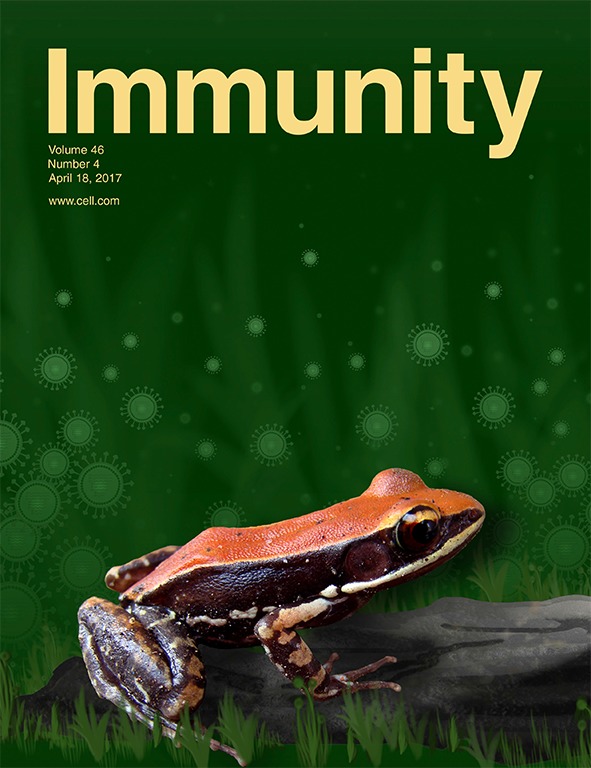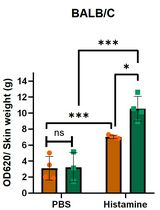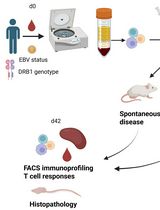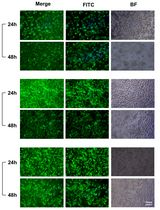- EN - English
- CN - 中文
Eicosanoid Isolation from Mouse Intestinal Tissue for ELISA
从小鼠肠道组织中分离类二十烷酸用于ELISA
发布: 2018年11月05日第8卷第21期 DOI: 10.21769/BioProtoc.3066 浏览次数: 4913
评审: Ivan ZanoniXIAOMING SunChangyi Zhang
Abstract
Activation of inflammasomes in peritoneal macrophages and intestinal epithelial cells (IEC) leads to the release of eicosanoids. To assess the amount of eicosanoids released by IEC, lipids need to be isolated from whole tissue previous to analysis by lipid mass spectrometry or ELISA. This protocol describes how to isolate lipids from intestinal tissue for analysis by PGE2-ELISA and normalize to tissue protein content.
Keywords: Intestine (肠道)Background
Inflammasome induced eicosanoid release is a relatively recent observation. It is not clear which cell/tissue types other than peritoneal macrophages and intestinal epithelial cells (IEC) (Rauch et al., 2017) can release prostaglandins upon inflammasome activation yet. This protocol can be adapted for other types of tissue as well as measurement of eicosanoid release induced by other stimuli than inflammasome activation in intestinal tissue.
Note that this protocol is specifically for use of eicosanoid analysis by ELISA, other protocols have been described for eicosanoid analysis by lipid mass spectrometry.
Materials and Reagents
- Culture tubes (Corning, Falcon, catalog number: 352059)
- 15 ml tubes (Corning, Falcon, catalog number: 352097)
- Flat bottom 96-well plates, transparent (Corning, Costar, catalog number: 3370)
- pH test strips (GE Healthcare, Whatman, catalog number: 2613-991)
- SPE Cartridges (C-18) (Cayman Chemical, catalog number: 400020)
- Paper towel
- Liquid nitrogen
- UltraPureTM water (Thermo Fisher Scientific, InvitrogenTM, catalog number: 10977)
- Indomethacin (Sigma-Aldrich, catalog number: I8280-5G)
- PBS (Thermo Fisher Scientific, GibcoTM, catalog number: 10010)
- 200 proof Kopec Ethanol (Decon Labs, catalog number: V1001)
- Methanol (Fisher Scientific, catalog number: A452SK)
- Ethyl acetate (Sigma-Aldrich, catalog number: 270989)
- Prostaglandin E2 ELISA Kit (Monoclonal) (Cayman Chemical, catalog number: 514010)
- BCA assay kit (Thermo Fisher Scientific, PierceTM, catalog number: 23227)
- K2HPO4 (Fisher Scientific, catalog number: P288)
- KH2PO4 (Fisher Scientific, catalog number: P285)
- DMSO (Sigma-Aldrich, catalog number: D8418)
- EDTA (Life Technologies, catalog number: 15575020)
- Sodium acetate (Sigma-Aldrich, catalog number: S2889)
- Acetic acid (Sigma-Aldrich, catalog number: A6283)
- Phosphate buffer (see Recipes)
- 1 M acetate buffer (see Recipes)
Equipment
- Forceps
- Scissors
- POLYTRON® PT 2500 E Stand Dispersion Unit (Ecoline) with 12 mm aggregate (Kinematica) or similar
- Fridge
- Centrifuge for 15 ml reaction tubes capable of cooling (Eppendorf 5810R or similar)
- Vortex
- 96-well plate reader capable of measuring absorbance between 405 and 420 nm and 562 nm (e.g., Molecular Devices, model: Spectramax® M2)
- Reacti-VapTM Evaporator (Thermo Fisher Scientific, catalog numbers: TS-18825 or TS-18826) or similar
- Nitrogen gas with pressure gauge hooked up to evaporator
- SPE Vacuum Manifold (Sigma-Aldrich, catalog number: 57250-U or similar)
- Vacuum trap (e.g., Fisher Scientific, FisherbrandTM Reusable Heavy-Wall Filter Flasks, catalog number: FB3001000) connected to central vacuum system or pump (e.g., Merck, Chemical Duty Vacuum Pressure Pump, catalog number: WP6122050) via tubing and rubber stopper
Procedure
文章信息
版权信息
© 2018 The Authors; exclusive licensee Bio-protocol LLC.
如何引用
Rauch, I. (2018). Eicosanoid Isolation from Mouse Intestinal Tissue for ELISA. Bio-protocol 8(21): e3066. DOI: 10.21769/BioProtoc.3066.
分类
免疫学 > 动物模型 > 小鼠
免疫学 > 粘膜免疫学 > 消化道
生物化学 > 脂质 > 脂质分离
您对这篇实验方法有问题吗?
在此处发布您的问题,我们将邀请本文作者来回答。同时,我们会将您的问题发布到Bio-protocol Exchange,以便寻求社区成员的帮助。
提问指南
+ 问题描述
写下详细的问题描述,包括所有有助于他人回答您问题的信息(例如实验过程、条件和相关图像等)。
Share
Bluesky
X
Copy link













